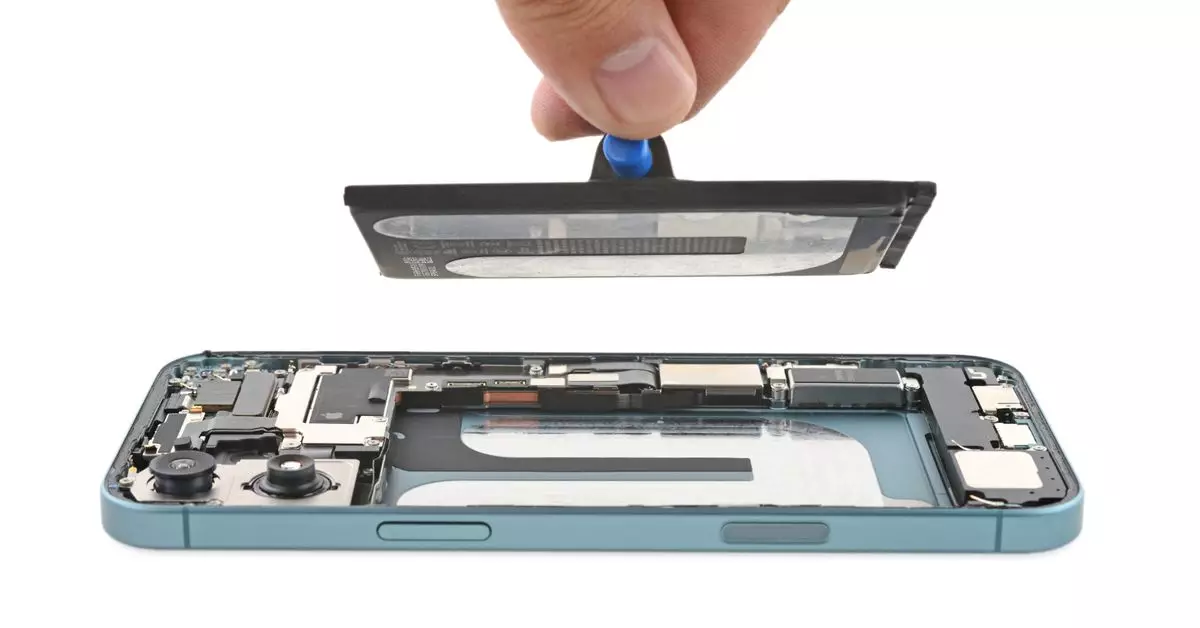The arrival of the iPhone 16 series has marked a significant moment for Apple, coming not only with new features but also with enhancements that prioritize repairability. The latest iPhone models have sparked interest greatly due to the innovative adhesive technology utilized for their batteries, setting a notable precedent in smartphone design. Unlike previous iterations, the iPhone 16 is equipped with electrically debondable adhesive, a development that reflects Apple’s shift towards more sustainable practices.
One of the most compelling aspects surrounding the iPhone 16’s design is the introduction of the electrically debondable adhesive used for securing the battery. This cutting-edge method allows for easier and more efficient battery replacements, addressing a long-standing criticism of smartphone repairability. Traditionally, removing a glued battery often resulted in damaging the device or prolonged repair times. With the new adhesive, Apple has significantly simplified the removal process; the battery can be detached with minimal effort by applying an electric current. This change is not just a minor improvement; it is a substantial step towards making devices more user-friendly and environmentally responsible.
The popular tech repair website iFixit wasted no time in dissecting the iPhone 16, revealing fascinating details about its internal structure. Notably, this model features a moving Camera control button and an advanced heat sink system designed for the A18 chip, which is pivotal in managing the heavy AI workloads that come with modern processing demands. These enhancements not only underscore the technical capabilities of the new iPhone but also hint at Apple’s intentions to improve user experience through practical design choices.
Moreover, the precision and quality of the internal components, highlighted through iFixit’s detailed testing, showcase Apple’s commitment to maintaining high standards. For instance, close-ups of the battery frame demonstrate precisely machined ridges that enhance adhesive effectiveness and maximize performance. This attention to internal structure presents a case of Apple prioritizing not only advanced functionality but also the integrity and durability of their devices.
Apple’s approach to innovation in the iPhone 16 series could set a benchmark for future smartphone designs across the industry. By prioritizing repairability through methods like the electrically debondable adhesive, Apple opens the door to a larger conversation around sustainability in tech. This model begs the question: will other manufacturers follow suit, adjusting their designs to facilitate easier repairs and more sustainable product lifespans?
Overall, the iPhone 16 brings to light not only technological advancements but also a shift toward better maintenance and environmental stewardship in smartphone manufacturing. As consumers grow more invested in repairability and sustainability, Apple’s forward-thinking moves with the iPhone 16 might just inspire a revolution in how future devices are built and repaired. This commitment to improvement, reflective of wider industry trends, could very well define the direction of smartphone technology for years to come.

